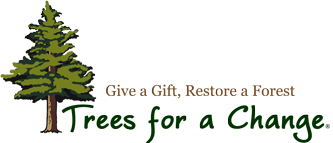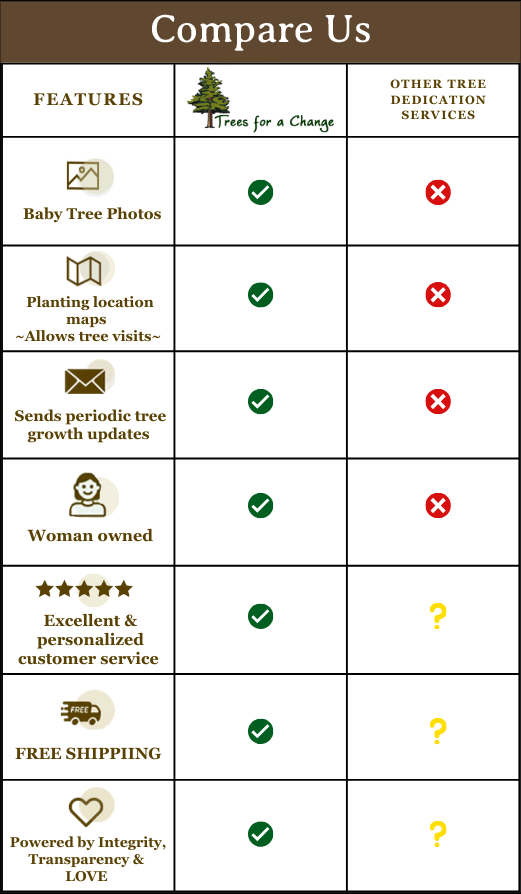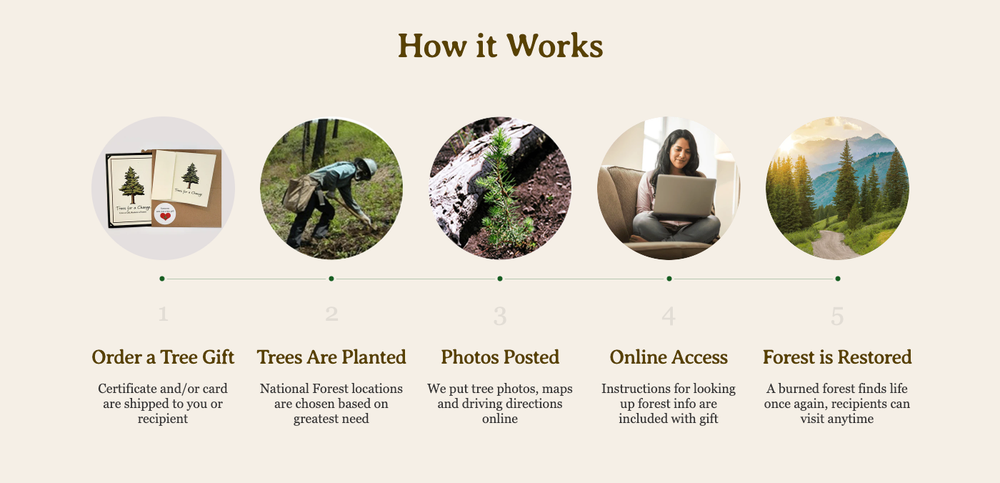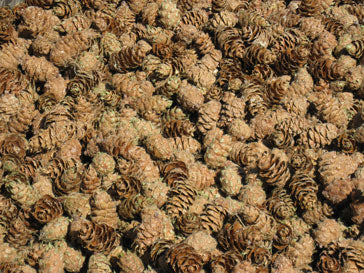
October 26, 2023
October 2023
Ever wondered about our tree planting process?
Well, here you go!
Step one:

After a wildfire in a National Forest, Forest Service experts inspect the area to determine if trees will grow back on their own or not.
Step Two:

To restore areas in desperate need of help, native species pinecones are gathered from areas with the same elevation and climate as the burned area.
Step Three:
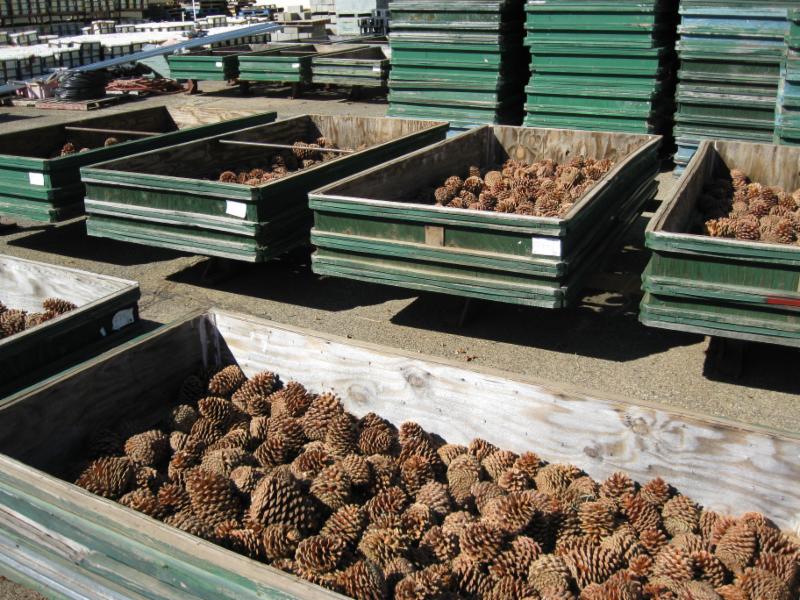
Pinecones are shipped to a regional Forest Service nursery, where they dry and open.
Step Four:

Viable seeds are separated from the duds, and the good seeds are planted in high quality soil.
Step Five:

Baby trees grow in the nursery for over a year while Forest Service experts prepare the burned area and make sure it is safe for the workers and ready for planting.
Step Six:

The baby trees are shipped back to the forest for planting. They have a very high survival rate because they are genetically ready for the climate, altitude and soil conditions of the area.
Step Seven:

The baby trees are planted at the optimum time of year, usually late Spring or early Summer. They grow and thrive and THANKS TO FOLKS LIKE YOU, a forest is restored.
